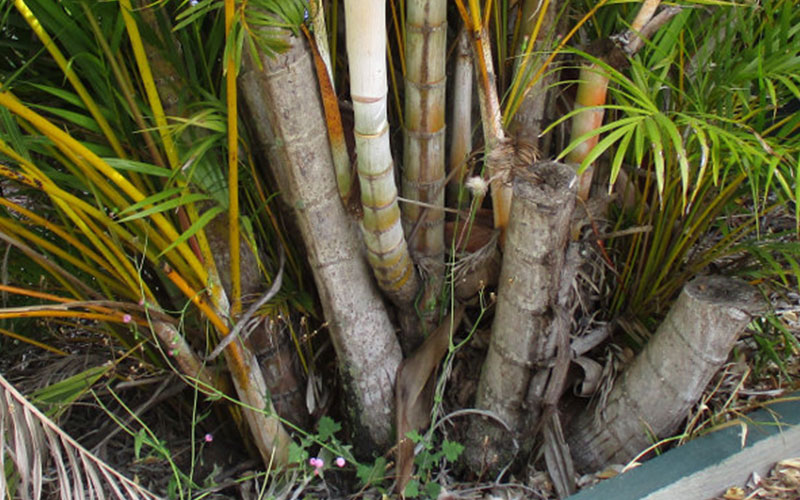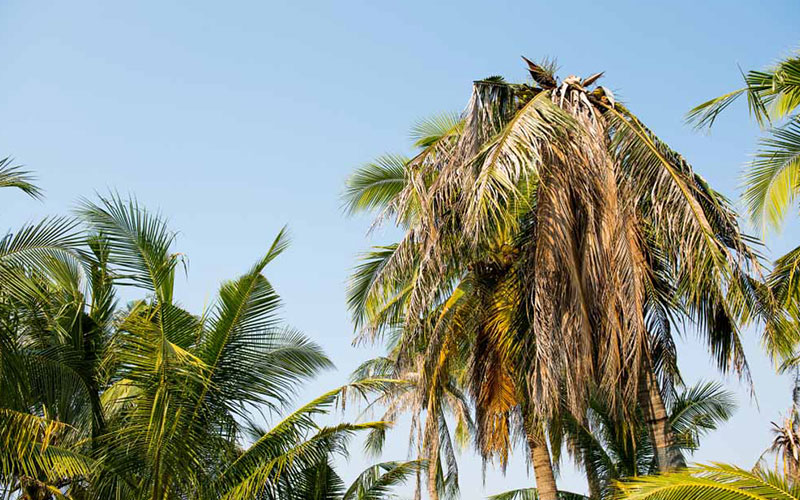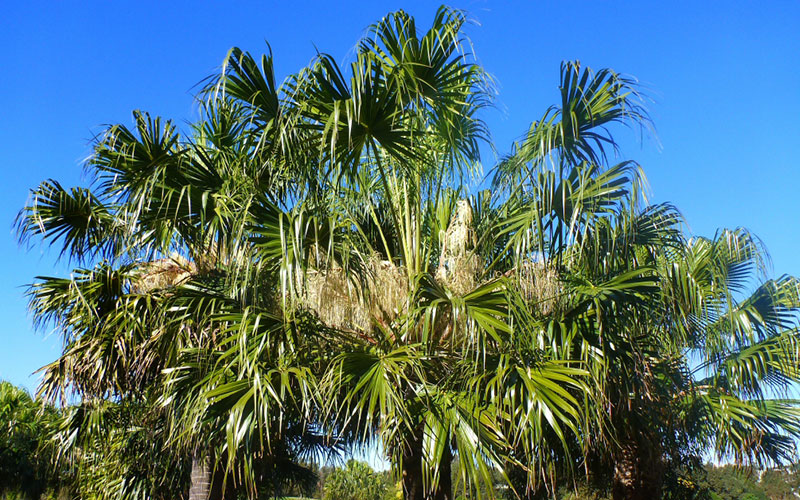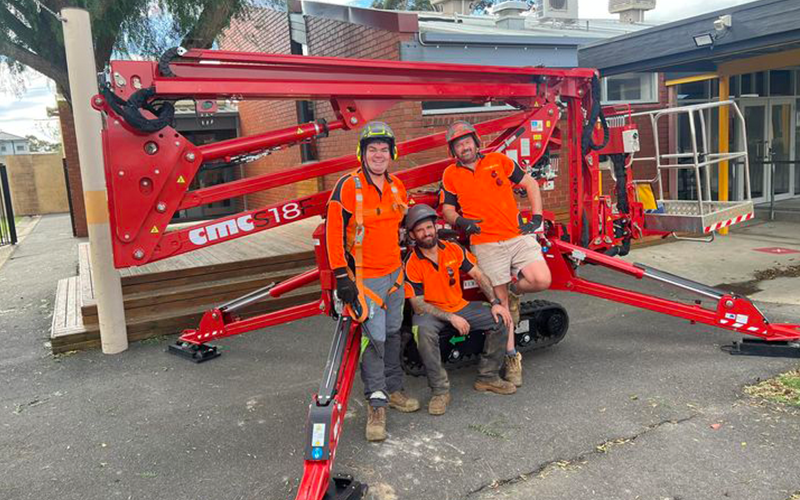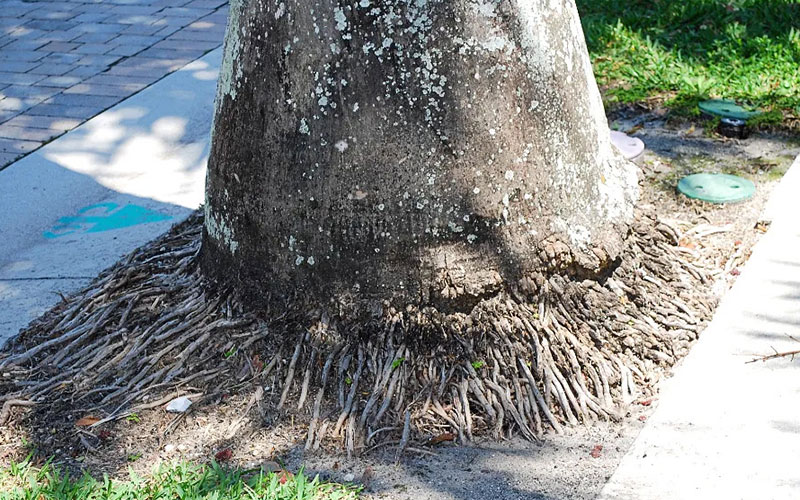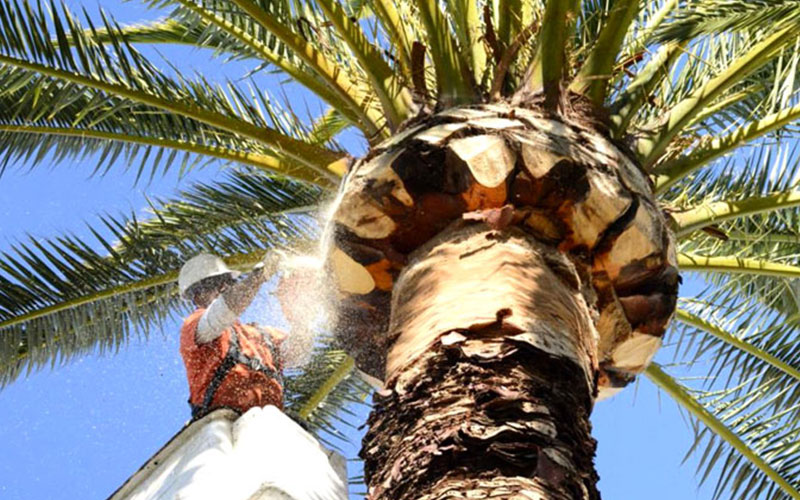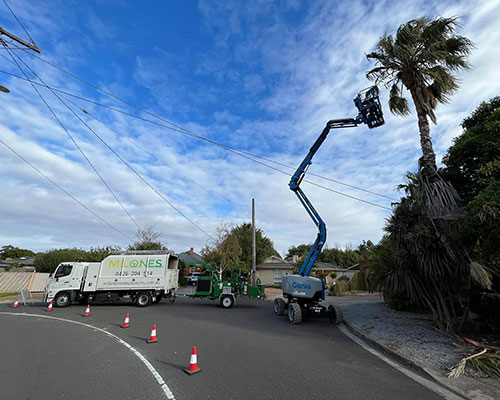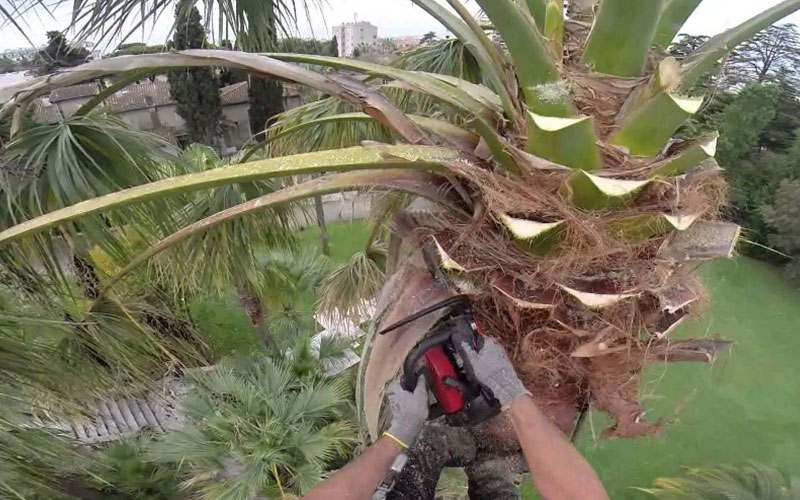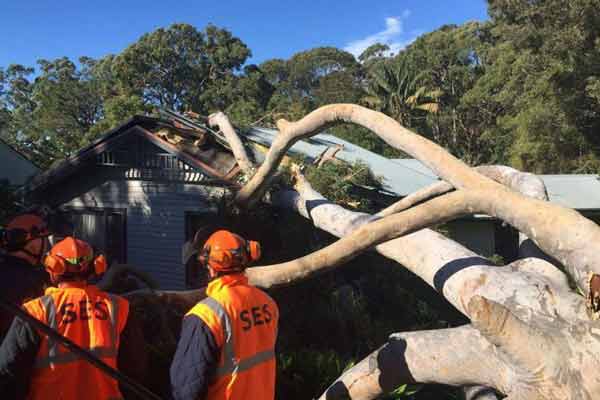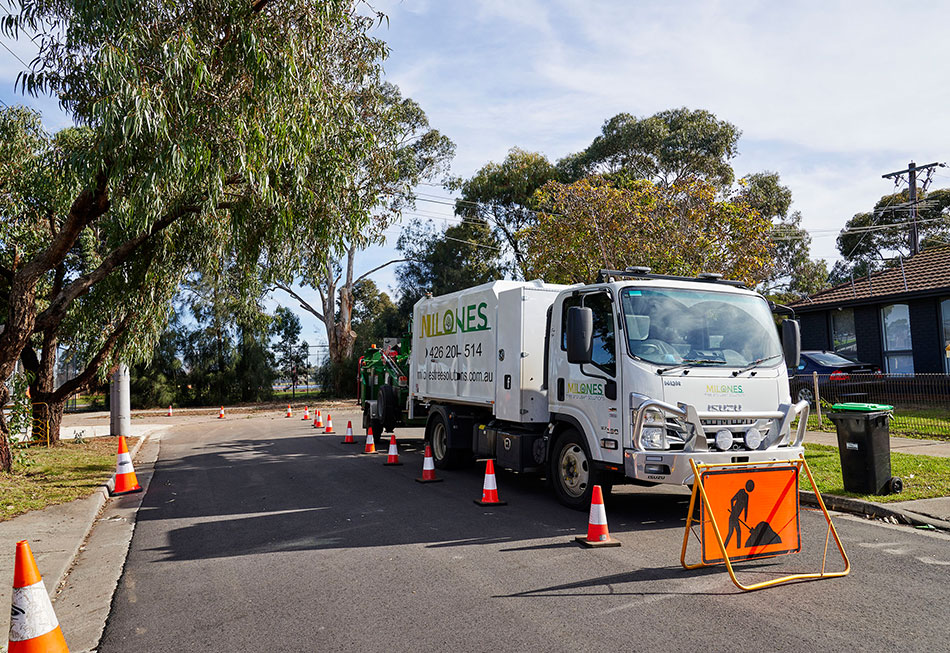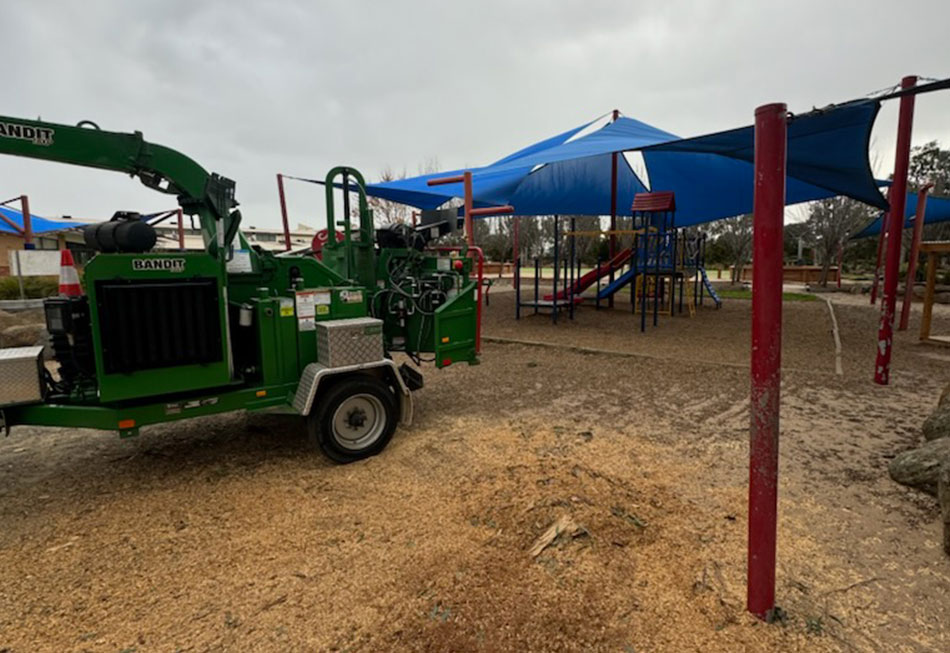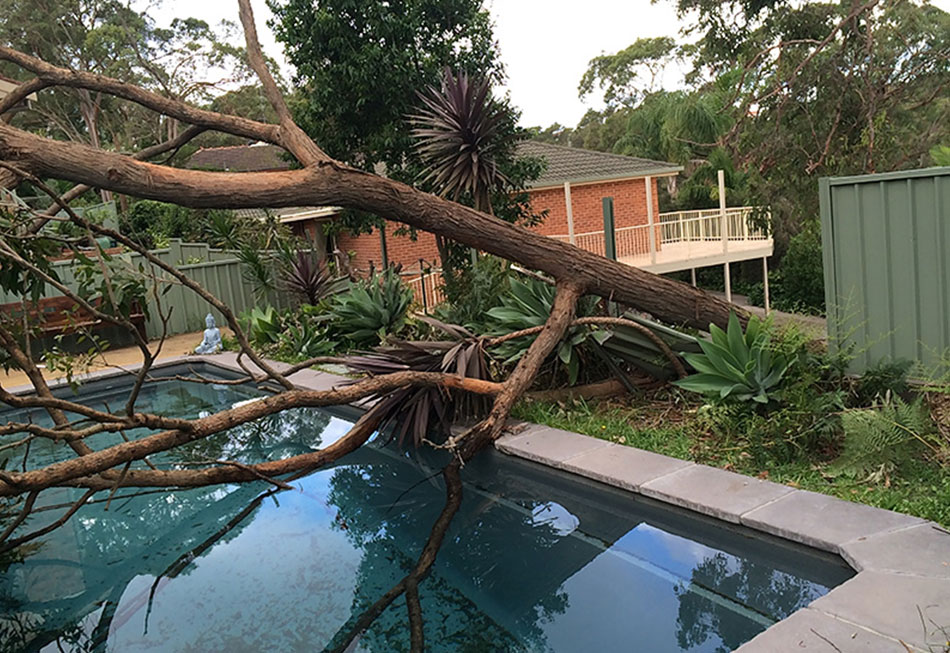Tree removal is a delicate task, especially when space is limited. In urban areas like…

Palm Tree Removal Melbourne – Services, Risks & Methods
Palm trees were a big rage about fifty years ago. But today, those 1970s born palm trees have grown into oversized, cumbersome intrusions into many residential lawns. They can add a nice aesthetic touch, but sometimes they can really overtake your land.
Milone’s Tree & Lawn Solutions specialises in palm tree removal in Melbourne. We have a certified arborist on staff and never subcontract any of our jobs. This is especially important when removing palm trees because they pose several additional risks that aren’t a factor with other tree types.
In this post, we want to show you what it takes to remove a palm tree so that you can get a better understanding of why it isn’t a job for amateurs.
When do I need to remove a palm tree?
Oftentimes, tree removal is just a matter of preference. You don’t like the look of the tree. It’s obscuring your view. Or you have plans to put up a playground or plant a garden.
But sometimes, you need to remove the palm tree because it is dead or dying. If there is serious damage to the bark, a split in the trunk or signs of disease, removing the tree should be a top priority. The last thing you want is an unexpected fall to damage your property or a loved one.
You can read more about the signs of a dying tree in our Dead Tree Removal Guide. But if you have any questions about the health of your tree, you should have a licensed arborist take a look at it sooner rather than later.
An Arborist (also known as Arboriculturist) is a professional who specialises in tree management and care. They can prepare reports to support planning applications. – VicSmart Guide
Are palm trees easy to remove?
That’s a big no. In fact, ecologists theorise that palm trees have evolved to withstand hurricane conditions. If they are tough for Mother Nature to take down, you can bet they are pretty resistant to the efforts of amateur tree workers.
There are two primary factors that increase the difficulty of removing palm trees:
Fibrous Wood
Palm trees are more fibrous than other types of trees. This is because they need to bend in storm winds so that they don’t snap. While this is good for the tree’s health, the fibrous nature of palm wood means that it can’t be run through a wood chipper. They tend to clog the chipper and can even cause permanent damage.
Extensive Root Systems
The roots of palm trees grow in a unique manner. Rather than dig deep into the soil, they remain shallow and tend to spread very far. These extensive root systems help stabilise the tree in high winds so they can’t be uprooted as easily. However, like the trunk, the roots are stringy and fibrous, which makes them exceptionally difficult to remove.
Risks of palm tree removal
Palm trees aren’t just difficult to remove. They can be dangerous too. Tree removal in general poses a risk of personal and property damage, but the difficult nature of palm trees just exacerbates these risks.
Collapsing Palm Rings
The long systems of palm leaves, called fronds, are attached in interconnected rings at the base of the tree. Unfortunately, since they are interconnected, this means that an attempt to trim a frond or two may result in an entire ring of them coming loose. If there is unseen damage to the trunk, the chances of this increase significantly.
Palm fronds are heavy, weighing as much as a hundred pounds in a full-grown palm. One falling frond alone can cause catastrophic damage. Imagine what a whole group could do.
Top Heavy
Palm trees are also very top heavy. The round “ball” at the top is unique to palms, as well. Typical tree removal methods don’t account for the fact that the top of the tree can potentially go rolling. So palm trees have this added consideration.
An amateur might just hack it off and hope it doesn’t roll into anything or anyone. A professional tree company, on the other hand, will typically work from a raised platform to minimise the risks as much as possible.
Can you cut a palm tree with a chainsaw?
A chainsaw is commonly used to cut down palm trees. We use them both to fell the tree and to cut it into pieces for disposal. That being said, there are some very important safety considerations to keep in mind when it comes to working with a chainsaw on a palm tree.
Clean and maintain the chainsaw during the job
Because palm trees are so fibrous and stringy, they have a tendency to get caught in chainsaws. This doesn’t usually risk damage to the tool, but it does mean that you frequently need to stop and provide professional maintenance to your chainsaw in the middle of a job. If you try to operate it when it’s clogged with palm fibers, you are increasing the chance of an accident caused by unexpected jamming.
The engine cooling fins can be clogged with palm tree fibers are drawn into the saw through the cooling vents on the recoil starter housing. This will likely cause the engine to overheat and seize. The damage is not covered under the manufactures warranty. It’s caused by a lack of regular maintenance, not a manufacture defect. – Rec World Outdoor Power Equipment
Don’t operate a chainsaw from a ladder
If a tree can’t be felled directly because of nearby property, it may need to be cut apart piece by piece. A novice who doesn’t know any better might try to do this from a ladder. Unfortunately, chainsaws are heavy machinery that can easily destabilise your footing and throw you off balance. The professionals at Milone’s will use a raised platform in order to operate a chainsaw safely at any height.
Plan a safe fall
Whether you are felling the tree in one go or cutting it apart, you have to account for hundreds of pounds of lumber hurling through the air. Sometimes, we will lower pieces to the ground with ropes in order to get the most possible control over the fall. This is important, for example, when cutting down a tree that grows in between two homes.
Other times, we will use professional techniques and equipment in order to direct the fall in a safe direction. The best case scenario is when the tree is already leaning in the direction we need it to fall. If not, though, we can cut special notches and use ropes to get it to fall safely where we need it to without causing damage.
Why are palm trees expensive to remove?
Palm trees can be pricey to remove, ranging from about $250 to $2500. The cost depends on a variety of factors, with larger trees typically being more expensive to take down. But palm trees are notably costlier to remove than other types of trees.
Why is that?
It comes down to the fibrous nature that we’ve already explained. Other trees can be cut down and chipped into reusable mulch. A palm tree, however, is going to clog a chipper. So instead of chipping it, we typically cut a palm into pieces and haul it to the local tip. Therefore, the biggest added cost of palm tree removal is disposal.
How deep are the roots on a palm tree?
Believe it or not, palm tree roots aren’t that deep, only digging to a depth of about 1 meter maximum. While other trees grow thick roots that branch out into thinner offshoots, palm roots stay skinny and fibrous even as they grow.
One interesting fact about palm tree roots is that they often grow above ground at the base of the trunk. These are known as adventitious roots. They can’t actually absorb nutrients, but don’t pose any sort of danger to the tree.
How do I get rid of an unwanted palm tree?
The best way to get rid of an unwanted palm tree is to hire a professional to do the job for you. While a small tree might be a DIY job, anything taller than 3 meters is best to hire out. For all of the added difficulty and safety concerns posed by palm trees that we have already highlighted, we can only recommend that you call a professional tree service company. DIY tree removal is just costly and dangerous.
Even if you can manage to cut down the tree yourself, you’ll still have to deal with stump removal. And stump removal costs can actually be higher when you do-it-yourself because of equipment rental fees.
Don’t hire cheap tree workers
You probably shouldn’t do-it-yourself, but you also don’t want to hire an amateur. Just because your uncle Steve has a shiny new chainsaw doesn’t mean he knows how to deal with the intricacies of palm tree removal in Melbourne. Neither does that fly-by-night company advertising on handwritten signs stapled around the neighborhood.
The problem with non-professionals is that they might not realise what they are getting into until the job is only half done. They rent a chipper, clog it, and leave your yard with a hacked up tree trunk scattered all over the place. Or, they quote you one price only to learn how costly the job actually is. All of a sudden, they are charging you extra for disposal, equipment rental and more.
The worst possible scenario is that an amateur injures someone or damages your propert y on the job. If they aren’t insured, you could be left holding the bill unless you want to pursue a lengthy legal battle.
Call on Milone’s For Professional Melbourne Palm Tree Removal
Milone’s Tree & Lawn Solutions helps homeowners like you discover just how beautiful your landscape can be. Trust our certified arborists and in-house professionals with all of your palm tree removal needs. Request a free, no obligation quote today by giving us a call or filling out our easy online form.

